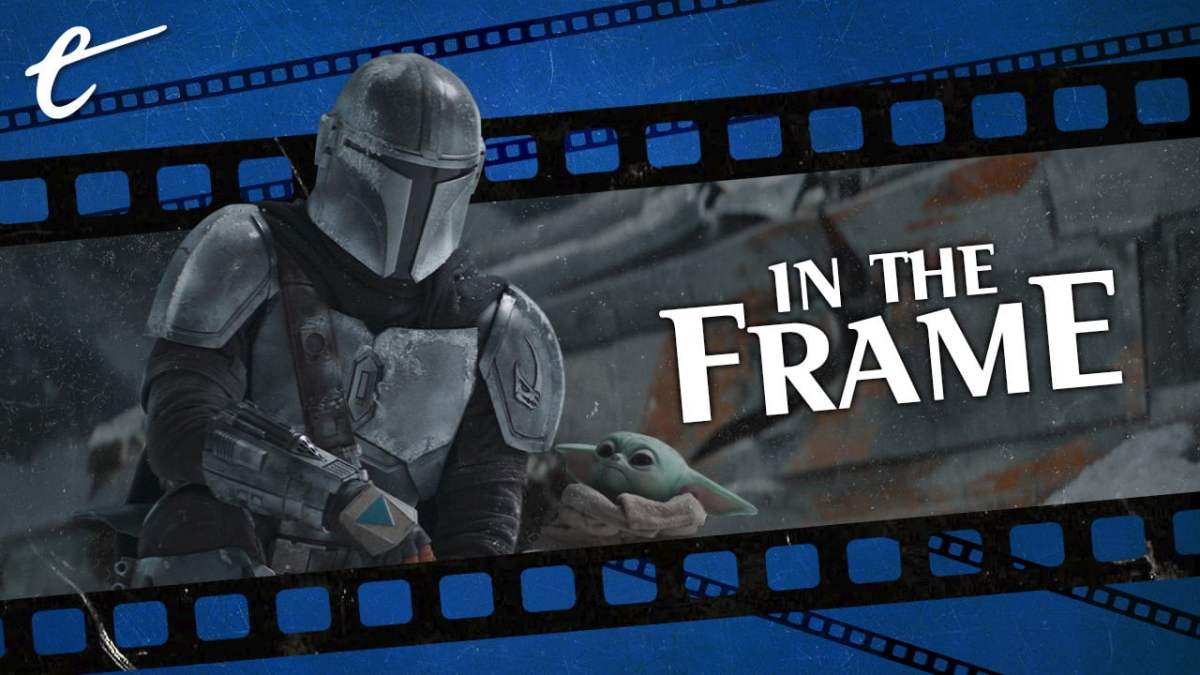In its second season, The Mandalorian has gone big on brand synergy.
The Mandalorian was always designed to appeal to Star Wars nostalgia, especially for the original films. “I’m trying to evoke the aesthetics of not just the original trilogy but the first film,” boasted showrunner Jon Favreau before the show’s premiere. After all, the eponymous bounty hunter (Pedro Pascal) is designed to look just like Boba Fett, a breakout character who “ascended to legendary status on looks alone.” He travels with a character that looks just like Yoda but is a baby.
However, the nostalgia in the first season of The Mandalorian tended to be rather general in nature. Barring a trip to Tatooine in the fifth episode, the first season of The Mandalorian was largely populated by objects that evoked memories of other distinct objects. IG-11 (Taika Waititi) is a bounty-hunting droid — but is not literally IG-88. Greef Karga (Carl Weathers) represents the Bounty Hunters’ Guild in a wretched hive of scum and villainy on a desert planet — but it is not Mos Eisley.
Indeed, while the first season of The Mandalorian played with familiar archetypes and imagery, it managed to build a rather large and novel supporting cast around its title character. The season finale managed to bring together its ensemble of new characters in an interesting and largely satisfying manner: not only Karga and IG-11, but also the anonymous Client (Werner Herzog), the former shock trooper Cara Dune (Gina Carano), and the moisture farmer Kuiil (Nick Nolte).
These were not necessarily well-rounded and complex characters, but they all served a clear narrative function. Favreau positioned many of them as efficient mirrors of the show’s central character: IG-11 was a killer reprogrammed as a caregiver; Dune was a soldier without a war or a home; Kuiil was a man who had done terrible things and yet found freedom and redemption. It was clean and it was efficient.

In contrast, the second season appears to have moved past this approach. It is less interested in creating new or interesting characters to complement the Mandalorian. After all, the most prominent original character spotlighted this season is probably the guest character in “The Passenger” credited only as “Frog Lady,” portrayed by Misty Rosas and voiced by Dee Bradley Baker. She had appeared briefly in the first season’s trip to Tatooine but was not a focal character.
Frog Lady does not have a name. She is non-verbal. At one point, she speaks using the remains of the droid Zero (Richard Ayoade). Frog Lady is perhaps most notable for the minor controversy around a recurring joke involving the aforementioned Yoda-like baby Grogu eating the eggs that were stated to be her family’s last chance of survival. While the controversy was blown way out of proportion, it is revealing that the show only saw Frog Lady’s plight as a source of light comedy.
This is not to suggest that the second season of The Mandalorian has no supporting cast of its own. It has featured several prominent characters, including the first live-action iterations of Cobb Vanth (Timothy Olyphant), Bo Katan (Katee Sackhoff), and Ahsoka Tano (Rosario Dawson). The season premiere featured the character recovering the armor of Boba Fett, with the closing shot finding Jango and Boba Fett actor Temuera Morrison turning to the camera.
These are all characters with strong ties to other Star Wars media. Bo Katan and Ahsoka Tano first appeared in The Clone Wars, an animated spin-off set during the prequel era. Their appearances are a big deal to a certain type of Star Wars fan and firmly anchor The Mandalorian in a larger shared universe. It draws a clear line between the past and the present, positioning The Mandalorian as an extension of The Clone Wars and The Clone Wars as essential to The Mandalorian.

However, while Bo Katan and Ahsoka Tano are compelling characters in The Clone Wars, they are not engaging in The Mandalorian. It is interesting to contrast their appearances in “The Heiress” and “The Jedi” to the simple pleasures of the reunion with Karga and Dune in “The Siege.” Bo Katan and Ahsoka Tano do not feel like they belong to The Mandalorian, with my colleague Jesse Lab noting that “The Jedi” felt like “a backdoor pilot for an Ahsoka Tano live-action spin-off.”
Then again, this speaks to the realities of brand management in the modern streaming age. In the past, canon and continuity were largely tiered and flexible. In most franchises, what appeared on television or film was important, and what appeared in novels or comic books or video games fell into a hazy area. Famously, Star Wars literally codified levels of canon in its original expanded universe, although few franchises took it that seriously.
Many franchises thrived with this loose approach to tie-ins and continuity. Many of the writers who would shape and define the relaunched Doctor Who began writing out-of-continuity charity specials and tie-in novels of questionable continuity value. In the years after the original Star Trek went off the air, the tie-in novels took on experimental qualities, developing alien species like the Klingons or the Romulans. Sulu and Uhura only got first names in tie-in fiction and supplemental material.
Ironically, when outside forces tried to police continuity, it suffocated creativity and compromised stories. Richard Arnold’s management of Star Trek continuity was infamous, especially his conflicts with writers like Peter David and Diane Duane. Arnold attracted criticism from television writers like David Gerrold, who dismissed him as “Gene’s errand boy.” Ronald D. Moore enjoyed slipping in references to The Animated Series, which Arnold had aggressively insisted was not canon.

Things are different now. Previously, tiers of content made sense. Film and television were mass media, designed to be accessible to as wide an audience as possible without requiring additional reading. Niche tie-in fiction could appeal to more specialist interests or more adventurous tastes. Recently, there has been a shift in larger pop culture away from that sort of mass media, reflected in debates about the future of “water-cooler” television or the death of the “monoculture.”
While the impact of culture like Avengers: Endgame suggests these fears are exaggerated, there is some truth underpinning them. Audiences are increasingly fragmented. Studios are attempting to vertically integrate, largely by launching in-house streaming services. In the age of the streaming service, it is not only important to have an audience, but to understand that audience. Brand identity is paramount, which is why otherwise promising services like HBO Max can struggle.
Streaming services like Disney+ can attract subscribers with high-profile releases like Hamilton or The Mandalorian. However, retention is an issue — there are those who signed up for the first season of The Mandalorian and unsubscribed once it ended. These services need to find a way to not only start audiences watching, but to keep them watching. This is part of the reason why CBS All Access appears to be moving towards a model of year-round Star Trek content.
This also explains why franchises with deep catalogues are so appealing: Fans of new content can delve into tie-in media and older installments during the “off” season. Synergy is important: Posters for the modern incarnation of Doctor Who share a design aesthetic with home media releases of the older iteration of the series and even the multimedia Time Lord Victorious event. Similarly, recent seasons of Star Trek: Discovery have been more confident than earlier spin-offs playing footage from classic episodes like “The Cage” or “Unification.” Fans can be encouraged to “archive binge.”

This explains a lot about the second season of The Mandalorian, most notably the way in which it treats characters like Bo Katan and Ahsoka Tano. It’s notable that the episodes built around both characters build to continuity references. At the end of “The Heiress,” Bo Katan tells the Mandalorian, “Take the foundling to the city of Calodan on the forest planet of Corvus. There you will find Ahsoka Tano.” The climax of “The Jedi” builds to Ahsoka demanding, “Where is Grand Admiral Thrawn?”
When uttered, these names meant nothing to a casual audience without in-depth knowledge of the lore and spin-offs. However, the episodes pivot on these lines, treating them as grand revelations. The way that they are delivered marks them as important. The implication is that any true Star Wars fan should know who Ahsoka Tano and Grand Admiral Thrawn are. Luckily, viewers can catch up by watching The Clone Wars and Rebels, handily available to stream on Disney+.
Disney understands fandom and how to exploit it for financial gain. Disney weaponized spoiler-phobia, turning it into a successful marketing gimmick with the premieres of Avengers: Endgame and The Mandalorian. With the second season of The Mandalorian, it looks to be doing the same thing with the canon and the lore as the company shifts to prioritize streaming. It appears to be working; analytics companies have already noted a spike in interest in The Clone Wars on Disney+.
This isn’t entirely a bad thing. There is a lot to recommend The Clone Wars, and it is good to see the show benefiting from the attention that it is receiving. On a purely visual level, Dave Filoni’s stylized direction of “The Jedi” is perhaps the best that The Mandalorian has ever looked. However, it also runs the risk of reducing The Mandalorian to a continuity-delivery mechanism, a piece of brand synergy rather than a compelling narrative in its own right.
There is a reason that fans came to love Bo Katan and Ahsoka Tano in The Clone Wars, just as there was a reason that fans came to love characters like Kuiil and Karga in The Mandalorian. It wasn’t because they existed to remind audiences of earlier appearances in other media.






Published: Dec 4, 2020 11:00 am